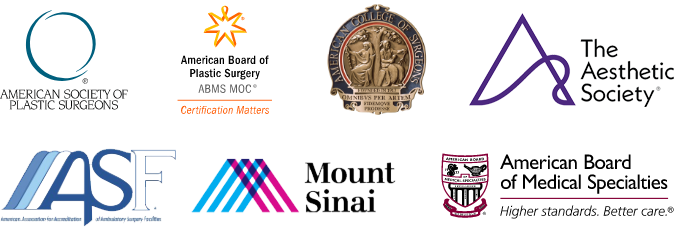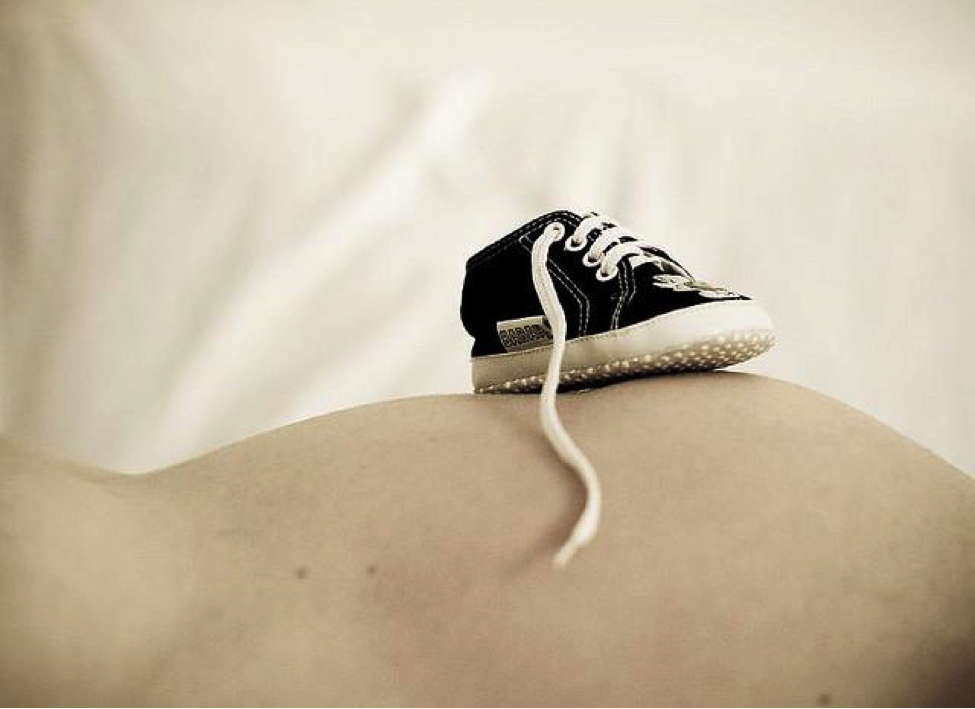Thomas P. Sterry, MD
1080 5th Avenue #1b
New York, NY 10128
Phone: (212) 249-4020
Monday - Thursday: 9 a.m.–5 p.m.
Friday: 9 a.m.–3 p.m.
Breast Reconstruction
With early detection, many more women today are surviving breast cancer and going on to lead healthy, active lives. Board-certified plastic surgeon Dr. Thomas Sterry offers breast reconstruction in New York City to help women restore their appearance and renew their confidence.
To find out more about your breast reconstruction options in NYC, request a consultation with Dr. Sterry or call (212) 249-4020.
When a woman undergoes a mastectomy, breast reconstruction surgery can help her reclaim a positive body image and aid in her emotional recovery.
Breast reconstruction can help you look and feel more feminine.
Dr. Thomas P. Sterry
Thomas Sterry, MD, is a board-certified New York City plastic surgeon with over 20 years of experience. He has been president of both the New York State Society of Plastic Surgeons and the New York Regional Society of Plastic Surgeons. In addition, he sits on the executive council of the New York County Medical Society and has been a delegate to the Medical Society of the State of New York for years. At his inviting, boutique-style practice in Manhattan, he focuses on each patient’s unique needs and aesthetic goals so that he can provide the most attractive and natural-looking outcomes possible.
Meet Dr. Sterry Request a ConsultationCredentials you can trust


Breast Reconstruction FAQ
What is breast reconstruction?
Breast reconstruction is plastic surgery to rebuild a breast’s shape and appearance after a mastectomy. This involves rebuilding both the breast mound and the nipple-areola complex.
Can breast reconstruction be done at the same time as a mastectomy?
It’s up to the patient, of course. Today, we normally perform a mastectomy and breast reconstruction at the same time. At your consultation, I review the pros and cons of this decision with the patient. The choice is usually influenced by the recommendation of the woman’s surgical oncologist, but doing both procedures at the same time has clearly been demonstrated to be safe.
Why have another operation if you don’t need one? You’re better off doing both the mastectomy and breast reconstruction at the same time. That way, when you wake up, your reconstruction is at least partially done.
How is breast reconstruction performed?
There are several ways to do breast reconstruction surgery.
- A TRAM, or transposition of the rectus abdominis muscle procedure takes skin, fat, and sometimes the muscle from the abdomen and twists it on the muscle axis, which is like a leash. Then we tunnel it under the skin of the abdomen and make a new breast mound out of it.
- A lattisimus dorsi procedure takes the ‘lat’ muscle from the back, rotates it around to the front, and makes a new breast of it. This technique does not usually produce enough breast volume, so we need to add a breast implant with this procedure. This procedure was the workhorse of breast reconstruction in the 1980s until the TRAM technique was introduced.
- A tissue expander procedure is a two-part process. The first operation involves putting in a tissue expander, which is basically a water balloon with a little port on it. Over the course of a few weeks or months, we add a little more saline through the port until the tissue is expanded. This stretches the skin and muscle so eventually, we can remove the tissue expander and put in a permanent implant.
This tissue expansion process typically takes 2 to 3 months, and it typically commits you to another operation to have breast implants inserted.
There are expanders available that are called permanent expanders, but studies have shown that more than half the time, the patient ends up exchanging them for implants anyway because they just don’t look quite right.
How do you rebuild the nipple?
Nipple reconstruction is done in a separate procedure after the breast mound has been recreated. I take flaps of skin to make a small bump resembling a nipple; it takes about 15 minutes.
Then I tattoo on a new areola, or the darker skin surrounding the nipple, which takes about another 15 minutes. I make every effort to duplicate the position, size, shape, and color of the woman’s natural nipple-areola complex as closely as possible during this process.
Which reconstruction technique do you prefer?
The reconstruction technique I use in a particular case is an individual, very personal choice that’s up to the patient. I don’t talk anyone into anything; I try to lay out a woman’s options and help her understand.
With a TRAM procedure, you get a big operation at one time and it will take you a little while to get back on your feet. However, a year later, I think women who have had the TRAM procedure are happier than those who decide to have a tissue expander put in.
A tissue expander requires surgery for insertion; then I have to see the patient on a weekly basis to expand it. Then I have to take the expander out and perform a second surgery to put the implant in.
Personally, I think we get superior results when we use the patient’s own tissue with the TRAM procedure.
But I do like the latissimus dorsi procedure. The only reason it has sort of fallen out of favor is that most times, we still need to put in an implant. If the patient is not opposed to having an implant, the latissimus dorsi procedure is actually a very nice operation. It’s a pretty good reconstruction, and it’s very quick. The latissimus dorsi procedure is a good, stable, reliable operation; it’s one of the workhorses of breast reconstruction.
But again, the choice of breast reconstruction method is totally up to the patient.
Which procedure do patients choose most often?
I probably do more tissue expander procedures than anything else; many women don’t want the big operation. Next-most popular is the TRAM, then the latissimus dorsi procedure. But as I said, I don’t talk a woman into anything; I lay out her choices and let her decide what’s best for her.
Does the latissimus dorsi procedure produce satisfactory results?
Yes. The latissimus dorsi or “lat” muscle in the back is analogous to the pectoralis—or “pec” muscle in the front of the chest. So it’s no big deal to swing the lat muscle around and use it in the front.
Does insurance cover breast reconstruction surgery?
Yes. The Women’s Health and Cancer Rights Act of 1988 requires group health plans, as well as their insurance companies and HMOs, that cover mastectomies to provide certain benefits for reconstructive breast surgery.
Will a woman have normal sensation in a reconstructed breast?
That depends on which reconstruction method is used. If I use a tissue expander, the woman will get a lot of sensation back. If I do a TRAM or latissimus dorsi procedure, the patient is really not going to feel anything in the new breast.
Are most women satisfied with their breast reconstruction?
I think that women who have breast reconstruction procedures involving their own tissue—whether it’s the TRAM or the latissimus dorsi method—are happier a year later than the ones who have the tissue expanders. To me, a nice TRAM typically looks much more like a breast when you’re done than a tissue expander and an implant are ever going to look.
Does breast reconstruction require a hospital stay?
Yes. The length of your hospital stay will depend on the reconstruction method you have chosen. If you have a tissue expander procedure, you can expect to spend 1-2 nights in the hospital.
If you choose a TRAM or latissimus dorsi procedure, you may be hospitalized for 4-5 days.
What kind of anesthesia is used for breast reconstruction?
Breast reconstruction surgery is performed under general anesthetic, so you will be asleep for the entire procedure.
Where are breast reconstruction scars placed?
That all depends on what kind of mastectomy was done and what kind of reconstruction we’re doing. It’s a very individualized procedure; this topic is too vast for me to offer an answer in a succinct way. In your personal consultation, I will advise you about scar placement and answer all your questions.
What should you expect immediately after breast reconstruction surgery?
This depends on the reconstruction method you choose. You will be given patient-controlled anesthesia (PCA) after your surgery to help keep you as comfortable as possible.
In your personal consultation, I will explain what you can expect immediately after surgery with each method.
How long is the recovery after breast reconstruction surgery?
Again, this depends on which reconstruction method you have chosen. I will spell out the recovery process for each method during your personal consultation.
What results can you expect from breast reconstruction surgery?
You will feel more whole after breast reconstruction, but there’s no way to measure how much happier you will feel. I make every effort to give your breasts a natural appearance to help you feel as much like yourself as possible.





